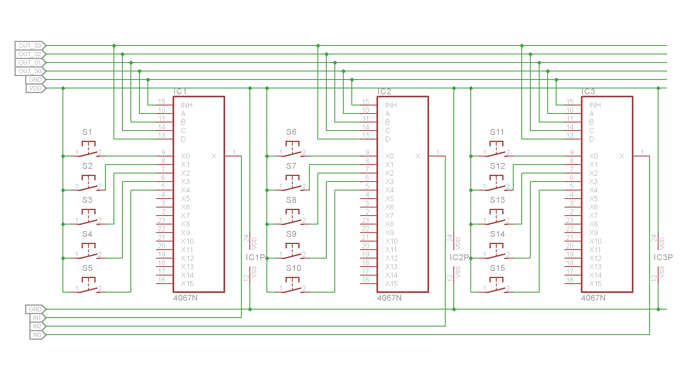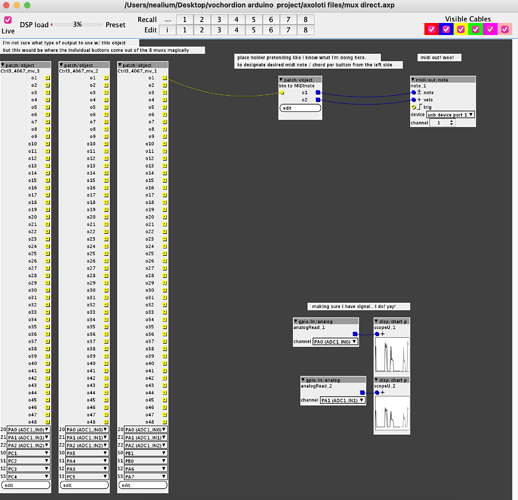Okay, zooming out for a moment. I've read back through your posts here. Just so you know, your project can be handled without introducing a Teensy, Arduino, or any other additional microcontroller. A Mega will be overkill if your goal is simply to have more pins to use. This is what multiplexers are for. You can still use a microcontroller if you want, but if the buttons and pots are all you need, adding the microcontroller would be like hiring a waiter at an ice cream shop. The middleman would only really slow down your process.
If you still have your 4067 multiplexers, you should have everything you need. For 35 buttons, you'll need 3 multiplexers. You're in luck, because the object tiar/HW/3_4067_mv is designed to work with 3 multiplexers.
You will still have enough additional pins on the Axoloti itself to hook up the potentiometers. Even better, use the third multiplexer for your pots, and use any of the unused digital-ins on the Axoloti itself for the three extra buttons. note: 4067s can be used for either digital or analog applications, but you cannot use one multiplexer for both digital and analog. No buttons and pots connected to the same single multiplexer. Two dedicated mux's for buttons and one dedicated mux for pots should be fine.
Coming back around to the original point, you shouldn't have to use a microcontroller at all, provided that your patch isn't overflowing the 8mb of memory in the Axoloti. Controllers are relatively light on the system. If you prioritize finishing this project over learning how to code, send MIDI messages, use level shifters, and everything associated with those, consider simply using tiar's object and following Johannes' diagram above.
Finally, if you're stubborn like me, and want to go through the agony of learning how to write firmware for an embedded system (programming an Arduino/Teensy/something else) just for this project, I'm still willing to help. If this is the case and you're just starting out, lower your expectations of having this project done 'soon'.



 I'm building a midi accordion of sorts.
I'm building a midi accordion of sorts. 

